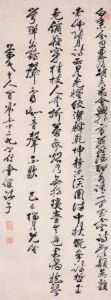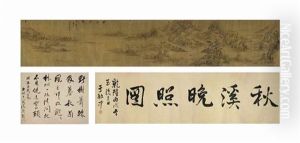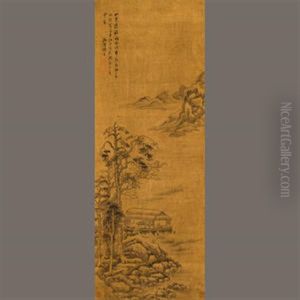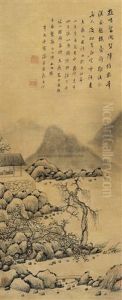Mao Xiang Paintings
Mao Xiang was a Chinese painter, calligrapher, poet, and essayist who lived during the late Ming and early Qing dynasties. He was born in 1611 in Nanchang, Jiangxi province, into a scholarly family. Mao's life spanned a tumultuous period in Chinese history, marked by the collapse of the Ming dynasty and the establishment of the Qing dynasty by the Manchu conquerors.
Mao Xiang is also known for his association with Dong Qichang, an influential artist and theorist of the time. Under Dong's guidance, Mao developed his skills in painting and calligraphy, and he became a member of the scholarly elite who played a significant role in the cultural life of the late Ming period. Despite the political upheavals of the era, Mao Xiang managed to navigate through these changes and even served in minor official posts under the Qing regime.
As an artist, Mao Xiang was part of the 'wenren' (literati) tradition, which emphasized the importance of personal expression and scholarly learning in art. His paintings mostly feature landscapes and are characterized by their refined and elegant style. In calligraphy, Mao is recognized for his running script, which is fluid and expressive. His literary works, including poetry and essays, reflect the literati's interest in self-expression and often convey a sense of melancholy and reflection on the changing times.
Mao Xiang's reputation as a man of letters was further cemented by his close friendship with the famous courtesan Dong Xiaowan, who was also a poet and intellectual in her own right. Their relationship has been romanticized in later literature and art, and Mao's writings about Dong Xiaowan are considered an important part of his literary legacy.
Despite not being as widely recognized as some of his contemporaries, Mao Xiang's contributions to Chinese art and literature have been appreciated by later generations of scholars and art connoisseurs. His works are studied for their historical value and their embodiment of the literati spirit of his time. Mao Xiang passed away in 1693, leaving behind a body of work that continues to be admired for its artistic merit and cultural significance.








